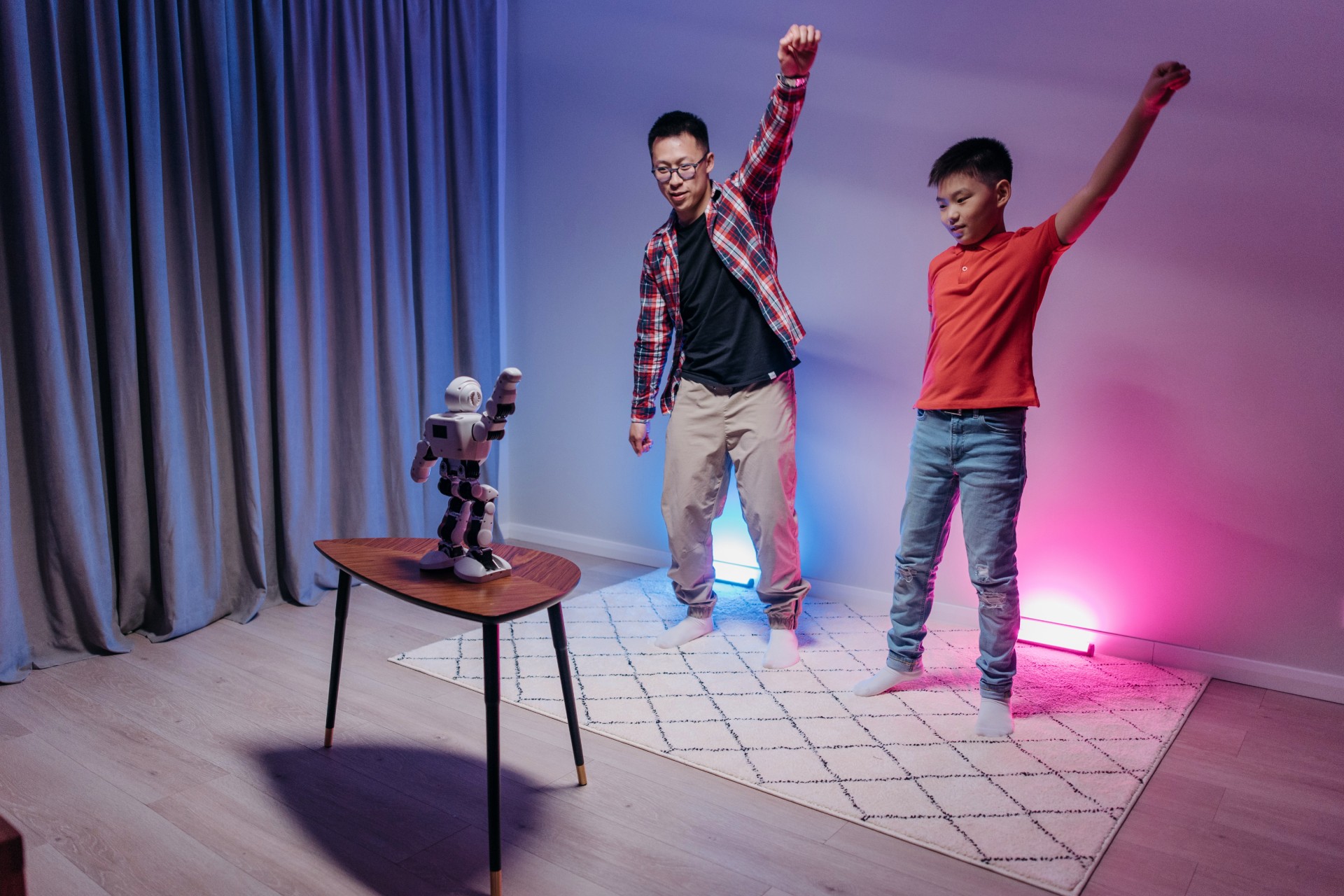Recent developments in artificial intelligence have enabled researchers to create humanoid robots. These robots typically resemble humans in shape and have different articulatory capacities. Due to this innovation, many researchers have expressed tremendous motivation to design dancing robots.
These robots mimic human-like choreographic dancing and moves due to the manually programmed complicated actions. Demonstrating the surprising level of excellence of dancing robots, Boston Dynamics released a video in which robots can be seen dancing to “Do You Love Me?”
This video gained a lot of attention from viewers around the world due to its mesmerizing and uncanny impression of showing machines dancing like humans.
These engineered robots actually convinced many viewers that they have rhythm. It’s actually mesmerizing to see robots dance like humans. Featuring three dancing robots — Atlas, Handle, and Spot — the video inspired disbelief, awe…and dread.
The reality of robots seems to be approaching before even we realize the capacities of dancing robots. Undoubtedly this choreographed programming requires carefully writing code for each swivel, sway, and squat in robots to mimic a dancer.
Five Prominent Dancing Robots
Here are five innovative dancing robots that can smoothly groove and mimic human-like moves.
1. Spot
Spot is one of three robots featured in the Boston Dynamics video. It’s a canine-like robot that has long elbowed arms. The arms are used for performing hops and twists and can even open doors.
Moreover, it has front and back pairs of legs which work independently of each other. It can show off unbelievable stabilization skills by holding its hand still while moving the rest of the body in any direction like jumping around the still hand.
In 2018, Boston Dynamics demonstrated the dancing skills of this robot. The video stunned its viewers with its human-like moves.
2. Sarcos
Sarcos is a dancing robot that has the ability to balance and move on two legs, just like a human. This robot is created by a Ph.D. student at Carnegie Mellon’s Robotics Institute.
This robot can mimic the motion capture moves of its creator. According to Benjamin Stephens, its creator, this dancing robot has extra balancing powers and can perfectly control whole-body movement. The use of the motion capture tool is quite helpful in programming the Sarcos.
Moreover, Stephens’s research is essentially based on push recovery and balance to control humanoid robots. Stephens is hopeful that humanoid and legged robots — when used properly — can work in difficult and uncertain situations. He’s on his way to taking his impressive knowledge to Boston Dynamics.
3. Lightsaber
This one may seem a bit of a stretch. However, we simply cannot neglect its capabilities in choreography dancing.
If we say this lightsaber-dueling robot also has professional choreographic dancer moves, we wouldn’t be wrong. These 7-axis Motoman Robo arms were displayed at the International Conference of Robotics and Automation by its Japanese Creator, Yaskawa.
The actual purpose behind designing these robotic arms is their use for welding rather than welding lightsabers. However, a choreographed duel is an excellent way for these robotic arms to show off their range of movement, speed, and agility…plus gain some attention from the media.
4. The Rumba
The Rumba is designed by researchers at the Nara Institute of Technology (NAIST). This robot is yet not ready for any dancing championship but it can surely outdance your vacuum cleaner.
Hiro, the human dance partner of the Roomba robot, uses the OpenNI framework and Kinect to record and evaluate his samba motions. Moreover, developers use ARToolKit to manage the position of the robot.
The Rumba performs by carefully following the movement of Hiro. Moreover, the Rumba robot can even spin, following the circle movement of its human dance partner.
5. Keepon
We can’t skip beatBot’s amazing bouncing Keepon robot. This robot has four degrees of movement and cameras implanted in its eyes and a mic in its nose. Surprisingly, it has the ability to rotate up to 180 degrees, rock side to side, nod its head, and bob up and down for expressing emotions.
Different psychological studies have proven its positive results as a tool for therapists, parents, and pediatricians working with children having developmental disorders. The toy version of this robot does not have cameras or teleoperation capabilities. However, it can interact with two modes music and touch.
In music mode, it can detect rhythms such as clapping, drum beat, or any music and dance on those beats. While in touch mode, Keepon uses its body sensors to respond to pats and pokes. Even children can play games using this feature.
These dancing robots definitely have an entertainment potential.
The Near-Future for AI-Powered Robots
Just like the Keepon robot, researchers are working on exploring the assistive capabilities of these robots by applying different technologies to serve human beings. For example, researchers are up to developing an intelligent walker for older people to assist them in walking without the risk of falling.
In short, you can expect dancing robots to help in improving the quality of life in the near future. It will be exciting to see what comes next.













